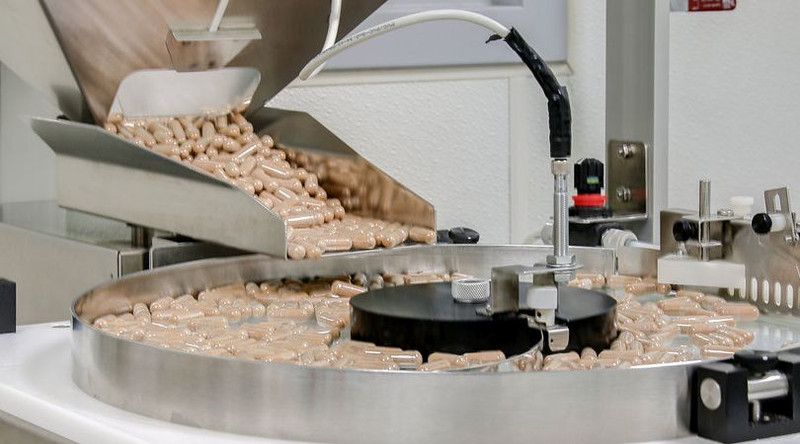When buying nutritional supplements, it's good to know exactly what each is best suited for in terms of health benefits and/or safeguards, and what dietary ingredients they contain. Like anything else, though, supplements have their share of the fine print as well, and, like reading a contract or the directions to a new gizmo you are putting together, it helps to have at least some understanding of the other ingredients contained in a supplement. When it comes to Wonder Labs products, it's easy to find all that information. Check out the back of the container each supplement comes in – usually it's a bottle – and you will see a headline that typically says Supplement Facts. Right beneath that you will see a list of the main component compounds of the supplement, also known as dietary ingredients, with each listed along with the amount per serving. Go further down and, just above the barcode, you will see a list of Other ingredients, listing the supporting elements included in the makeup of the pills, tablets, capsules, etc. contained inside.
What Are Other Ingredients ?
Most supplement products contain several inactive ingredients – namely, other ingredients – that serve functions such as helping to hold the tablets, etc. together from the time they leave the manufacturer assembly line to when the user of the product puts a supplement in his or her mouth, the idea being they won't fall apart during the weeks or months between manufacture and consumption. Once consumed as part of the supplement itself, these inactive ingredients pass through the body without providing nutritive value and without being absorbed by your body. In a sense, they play a supporting role to the supplement's main ingredient(s) lead or starring role. Per supplementation-for-health.com and biosynergy.com, below is a partial alphabetical listing and explanation of some of these other ingredients, focusing mostly on those found in Wonder Labs products:- Calcium carbonate. Described by supplementation-for-health.com as a pharmaceutical-grade, pure form of calcium, calcium carbonate is regarded as an excellent source of dietary calcium. This compound permits a superior compression of ingredients into tablet form.
- Cellulose. This is a pure form of plant vegetable that holds the tablet together. It is ground into a very fine powder to meet U.S. Pharmacopeia (USP) standards for gastric disintegration and to enhance nutrient bioavailability, per biosynergy.com.
- Gelatin. Sourced from beef tissues (primarily skin and bone) rich in collagen, it is used mostly to give structure to hard or soft gelatin capsules, which support the highest levels of product stability.
- Glycerin. A carbohydrate that originates from the fermentation of sugar beet molasses, glycerin provides even distribution and guards against chipping when used for tablet coatings. It is also used as a part of gelatin capsules.
- Magnesium stearate (stearic acid). This other ingredient serves its primary role in the manufacturer's assembly line. A mix of the essential mineral magnesium and stearic acid, this vegetable-sourced compound works to keep the tablet's ingredients from sticking to equipment as it passes through the manufacturing process. In case you were wondering, stearic acid is the immediate precursor of oleic acid, a fatty acid found in olive oil.
- Silicon dioxide (silica). Silica is Earth's most abundant substance. Because it's an insoluble compound, it won't get digested or absorbed in the intestinal tract. But what it can do is enhance the flow of powders and prevents materials from clumping during the manufacturing process. By insuring even distribution of nutrient components in the entire batch, it makes sure that the products meet or surpass nutrient label claims in a uniform manner.
- Tricalcium (or calcium) phosphate. Both calcium and phosphate are found in nature and are essential for proper body function and healthy bones. When combined this way as a supplement ingredient, they help with the even distribution and mixing of active ingredients, helping in the compression of tablets.
Safety and Quality Control
Although nutritional supplements fall outside the regulatory oversight of the Food and Drug Administration (FDA), consumers can take complaints to the FDA, in which case the federal agency is empowered to investigate any possible wrongdoing by the manufacturer of the supplement in question, a process that could conceivably involve looking into the supplement's ingredients. Here are suggestions recommended by webmd.com for checking into the efficacy of nutritional supplement products on the market, to include looking into any possible safety and/or quality control issues:- Research scientific studies included in credible publications. A good place to start is the National Institutes of Health
- (NIH) PubMed database. Google NIH is the best way to get started.
- If a product claims it will cure a disease or some other health affliction or condition, be wary. If it sounds too good to be true, it likely is.
- Be wary of products manufactured outside the U.S., as many such products are not regulated and might even contain toxic ingredients.

